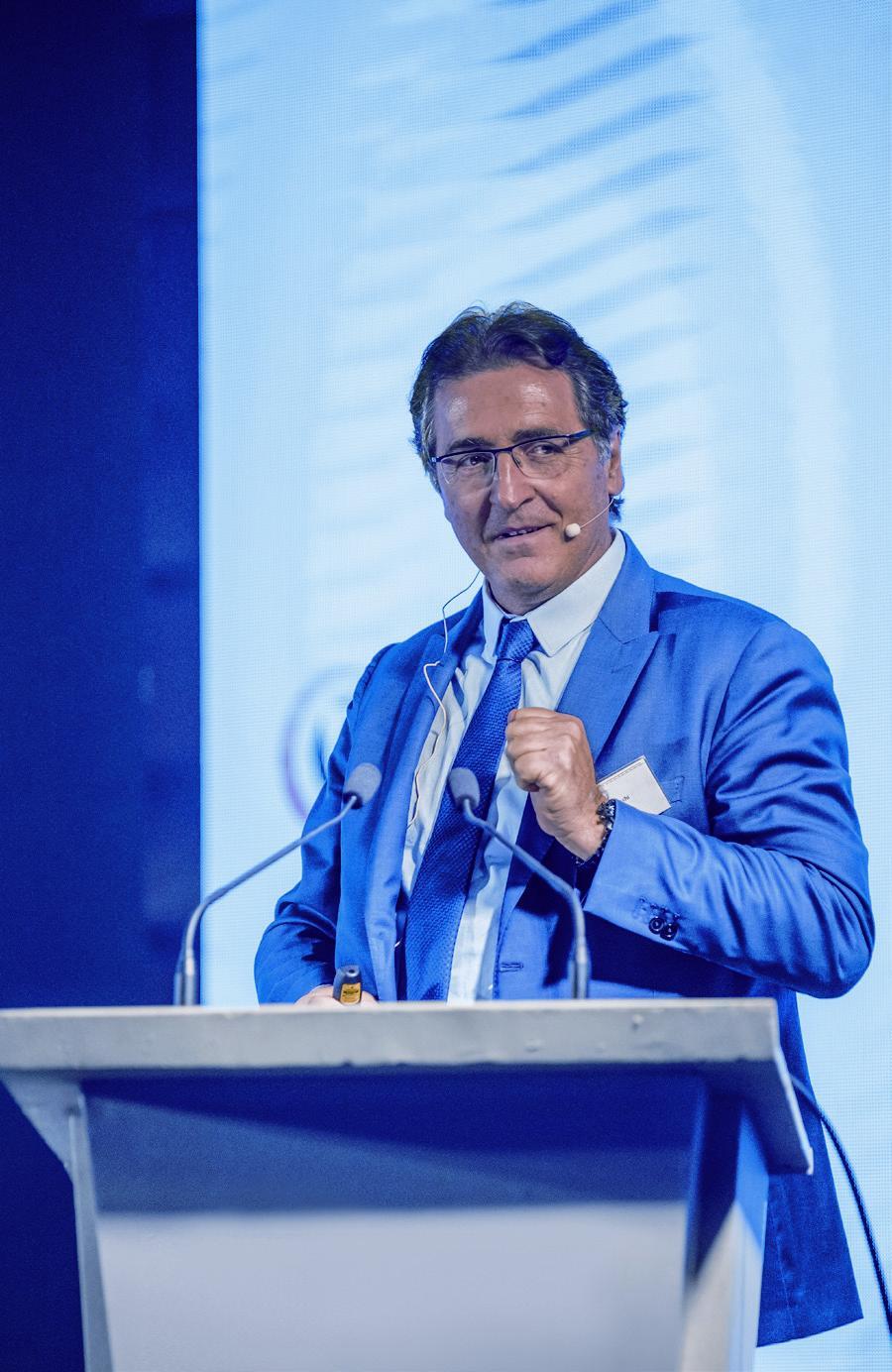意大利企业正在积极恢复生产和出口
2021-07-06
意大利紡织行业在2020年遭遇了全球范围内的大幅下滑。因此,机械方面的投资也下降了。对意大利纺织机械公司来说,2020年意大利市场的订单量同比下降30%。像其他欧洲的国家一样,意大利疫情距离正常化还有很长的路程需要走。希望疫苗接种计划的启动可以使感染人数得到控制。在经历了非常艰难的2020年后,意大利纺织机械行业也已经恢复生产和出口。只有在经营者们能够再次自由行动、重新参加贸易展览会,真正的复苏才将开始。
尽管新冠肺炎疫情大流行,但意大利制造商仍在继续投资研发,为客户提供技术先进的解决方案,不断降低生产成本的同时确保成品质量。意大利纺织机械行业多年来一直致力于为客户提供环境和经济方面的可持续解决方案。自2010年以来,我们同一些成员公司共同开发了可持续技术项目,表明了意大利致力于生产对环境、原材料、化学品、水和能源有更多关注的机械。生产过程的数字化,以及纺织企业机械和生产系统之间的紧密联系也是意大利制造商最为关注的主题。最近我们也发起了一个项目,目的是确定一种数字认证形式,使成员公司可以认证其机器是否易于集成到客户的生产系统中。
可靠、通用和优秀的性价比一直是意大利纺织机械的特点。通过对不同类型机器的出口数据分析可得,我们的出口遍及100多个国家,涉及纺织生产链从纺纱到织造,从针织到整理的所有生产环节。其中,亚洲市场是意大利出口的主要目的地。土耳其、中国和印度是意大利销售的主要市场。截至3月底,共有65家意大利展商参加本次展会,展出面积达3200平方米。其中有21家展出公司将参加国际展区。
亚洲是主要的纺织品生产中心,中国是主要的纺织服装生产国和出口国,并且在未来的几年还会一直保持这一地位。但是整个亚洲地区正在快速发展,孟加拉国、越南和巴基斯坦等国也是全球纺织机械的重要市场。ITMA ASIA + CITME是亚洲市场的主要展会,并在2021年6月,届时全球疫苗接种情况较为乐观的时候举行,不过国际上对跨境旅行的严格限制还是影响了许多参展商参加的决定。
纺织工业的未来是光明的。面对2020年这样困难的时期,对于纺机企业来说,为了增强竞争优势,利用技术进步来支持自己的产品创新及降低成本将变得越来越重要。纺织品的需求将会随着全球经济的增长而增长。如何充分利用日益稀缺的资源对我们来说是一个很大的挑战。因此,产品必须向可持续、可回收,使用更少资源的方向发展。为了实现这些目标,我们必须走纺织机械创新之路。
Italian enterprises positive to recovering production and export
Interview with Alessandro Zucchi, President of ACIMIT
The Italian textile sector has suffered a sharp decline in 2020 as happened worldwide. Consequently, investments in machinery have also fallen. For Italian textile machinery companies the drop in orders intake for the Italian market in 2020 was 30% compared to the previous year. Italy, like other European countries, is still far from a return to normality. I hope that the start of a national vaccination plan will bring under control the number of new infections. In the meantime, the Italian textile machinery industry, after a very difficult 2020, has resumed production and exports. A real recovery can only take place when the operators in the sector can once again move freely and the trade fairs return to being in attendance.
Italian manufacturers, despite the COVID-19 pandemic, have continued to invest in R&D, providing their customers with technologically advanced solutions, with the aim of constantly reducing production costs while ensuring the quality of the finished products. The Italian textile machinery sector has been committed for years to providing its customers with sustainable solutions in both environmental and economic terms. It is enough to think that since 2010 ACIMIT and some member companies have realized the Sustainable Technologies project, which testifies the Italian commitment to produce machinery more attentive to their environmental impact and to the use of raw materials, chemicals, water and energy. The digitization of production processes with a strong interconnection between machines and production systems of textile companies is also a theme to which Italian manufacturers are paying the utmost attention. ACIMIT has recently launched a project aimed at defining a form of digital certification, which can be used by ACIMIT member companies to certify the ease of integration of their machinery into the production systems of their customers.
Reliability, versatility and an excellent quality/price ratio are the characteristics that have always distinguished Italian textile machinery. Our exports reach more than 100 countries and the breakdown of exports among the different typologies of machines confirms that the demand of Italian technologies concern all segments of the textile production chain: from spinning to weaving, from knitting to finishing. Asian markets represent the main destination for Italian exports. Turkey, China and India are the top markets for the Italian sales. Figures updated at the end of March show 65 Italian exhibitors, with an occupied area of over 3,200 square meters. 21 of the 65 Italian exhibiting companies will participate within the National Sector Groups.
Asia is the main textile production hub. China is the leading producer and exporter of textiles and apparel and will remain so in the coming years. However, the entire Asian area is undergoing fast development, with countries, such as Bangladesh, Vietnam and Pakistan, remaining important markets for global textile machinery despite the pandemic. ITMA ASIA+ CITME 2020 will take place at a time (June 2021) when the worldwide vaccination campaign will have already unfolded its positive effects. In the meantime, there is no doubt that the severe restrictions on cross-border travel have influenced the decisions of many exhibitors to reduce the amount of exhibition space they have booked. ITMA ASIA + CITME remains the main exhibition for the Asian market, but this years edition will be strongly affected by the COVID-19 pandemic.
The future of textile industry is certainly bright. In a difficult year like 2020, in order to exploit a competitive advantage over competitors, it will be increasingly important for textile companies to be able to take advantage of the technological advances incorporated in capital goods to support their own product innovation processes or cost reduction. The challenge will be to make good use of the growing scarcity of resources. Therefore products will have to be more sustainable and recyclable, requiring the use of fewer resources. To achieve these goals, it will be necessary to follow a path of innovation that will also involve machinery.
